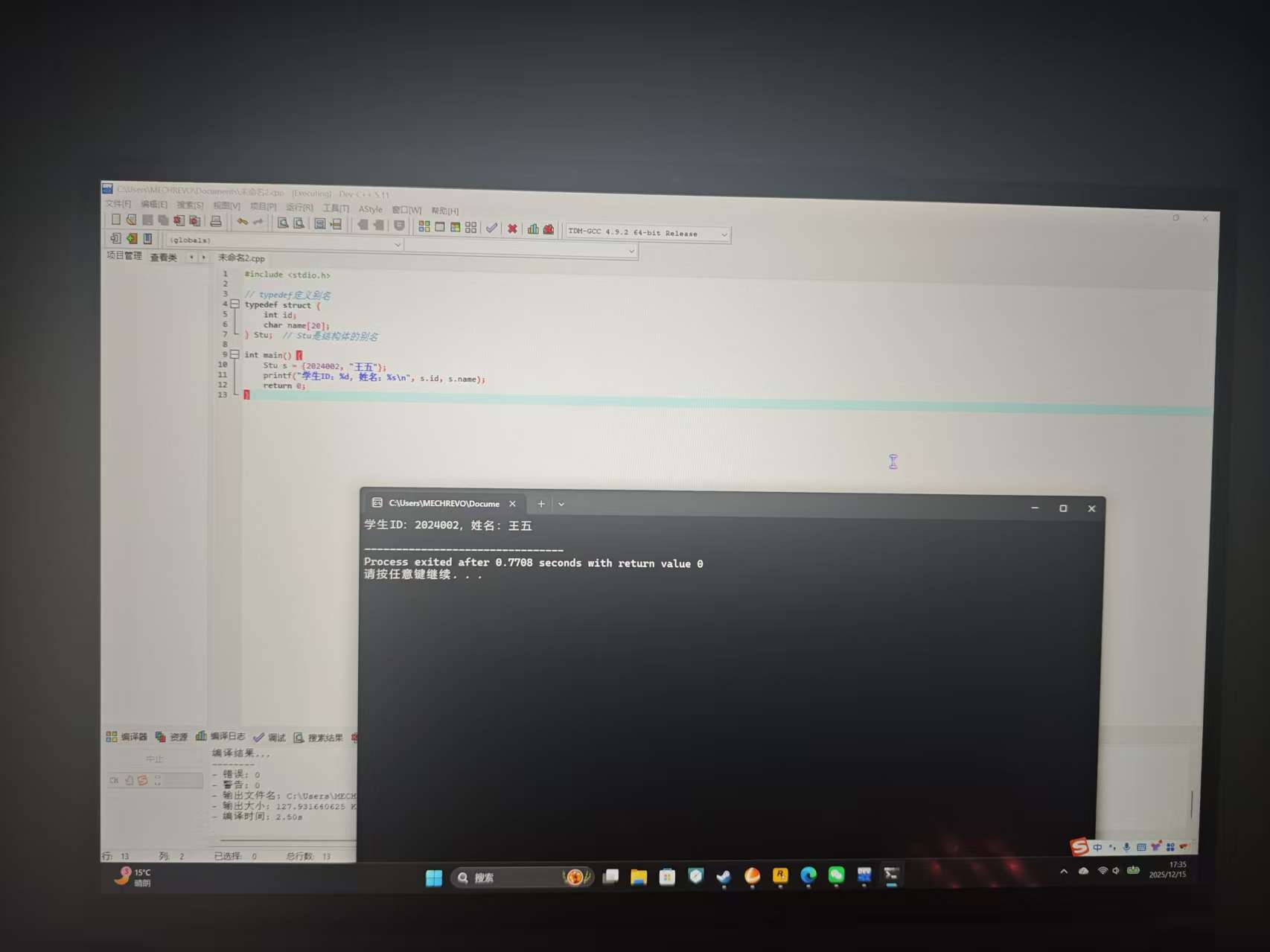-
高级语言程序设计课程第十次个人作业
这个作业属于哪个课程:https://edu.cnblogs.com/campus/fzu/gjyycx 这个作业要求在哪里:https://edu.cnblogs.com/campus/fzu/gjyycx/homework/15596 学号:102500301 姓名:沙圣茗 1)编写一个程序,将 -
实验5
实验5 实验结论: 实验任务1: 源码: Publisher.hpp #pragma once #include <string> // 发行/出版物类:Publisher (抽象类) class Publisher { public: Publisher(const std::string &na -
高级语言程序设计课程第十次个人作业
这个作业属于哪个课程:https://edu.cnblogs.com/campus/fzu/gjyycx 这个作业要求在哪里:https://edu.cnblogs.com/campus/fzu/gjyycx/homework/15596 学号:102500432 姓名:陈光奇 (1)编写一个程序, -
实验5
实验任务1: publisher.hpp: 1 #pragma once 2 3 #include <string> 4 5 // 发行/出版物类:Publisher (抽象类) 6 class Publisher 7 { 8 public: 9 Publisher(const std::strin -
9
 ,用于遍历所有可能的解。 根节点:第0层 -
实验6
任务1:源代码: 1 #pragma once 2 #include <iomanip> 3 #include <iostream> 4 #include <string> 5 6 struct Contestant { 7 long id; // 学号 8 std::string name; // -
算法第五章作业
回溯法求解最小重量机器设计问题 1. 用回溯法的方法分析“最小重量机器设计问题” 1.1 解空间 最小重量机器设计问题的解空间由所有可能的供应商选择组合构成。对于n个部件和m个供应商,每个部件都有m种选择,因此解空间的大小为mⁿ。每个解可以表示为一个n元组(x₁, x₂, ..., xₙ),其中xᵢ -
算法第五章作业
请用回溯法的方法分析“最小重量机器设计问题” 1.1 说明“最小重量机器设计问题"的解空间 有n个部件,每个部件可以从m个供应商处购买。则解空间有m的n次方个解 1.2 说明 “最小重量机器设计问题"的解空间树 解空间树的层数t为选择的部件t,每个节点有m个分支,代表选择第m个供应商。第n层节点表示 -
算法第四章作业
1.贪心策略: 先将将所有的区间,按照区间的 右端点从小到大 的顺序进行排序 之后初始化:记录最后一个选中的点的位置为 −∞,选点的总数为 0。 依次遍历排序后的每一个区间: 如果当前区间的左端点>最后一个选中的点,就选择当前区间的右端点作为新的点,选点总数 + 1,同时更新最后一个选中的点为当前区 -
高级语言程序设计第十次作业
这个作业属于哪个课程:https://edu.cnblogs.com/campus/fzu/gjyycx 这个作业要求在哪里:https://edu.cnblogs.com/campus/fzu/gjyycx/homework/15596 学号:102500429 姓名:王梓浩 7。 -
算法第五章作业
一、最小重量机器设计问题的回溯法分析问题背景:需为机器选择 n 个部件,每个部件有 m 个可选供应商,第 i 个部件选第 j 个供应商的重量为(w[i][j])、成本为(c[i][j]),要求总成本不超过 C,求最小总重量。 1.1 解空间解空间是长度为 n 的向量集合:((x_1, x_2, .. -
高级语言程序设计课程第十次个人作业
这个作业属于课程:https://edu.cnblogs.com/campus/fzu/gjyycx/ 这个作业要求在:https://edu.cnblogs.com/campus/fzu/gjyycx/homework/15596 学号:102500320 姓名:张振锟 (1)编写一个程序,将一个 -
实验六
task4 1 #include <stdio.h> 2 #define N 10 3 4 typedef struct { 5 char isbn[20]; // isbn号 6 char name[80]; // 书名 7 char author[80]; // 作者 8 double sale -
实验6
实验任务4 源代码 1 #include <stdio.h> 2 #define N 10 3 #include<stdlib.h> 4 typedef struct { 5 char isbn[20]; // isbn号 6 char name[80]; // 书名 7 char author[8 -
高级语言程序设计课程第十次个人作业
这个作业属于课程:https://edu.cnblogs.com/campus/fzu/gjyycx/ 这个作业要求在:https://edu.cnblogs.com/campus/fzu/gjyycx/homework/15596 学号:102500405 姓名:刘诺涵 (1)编写一个程序,将一个